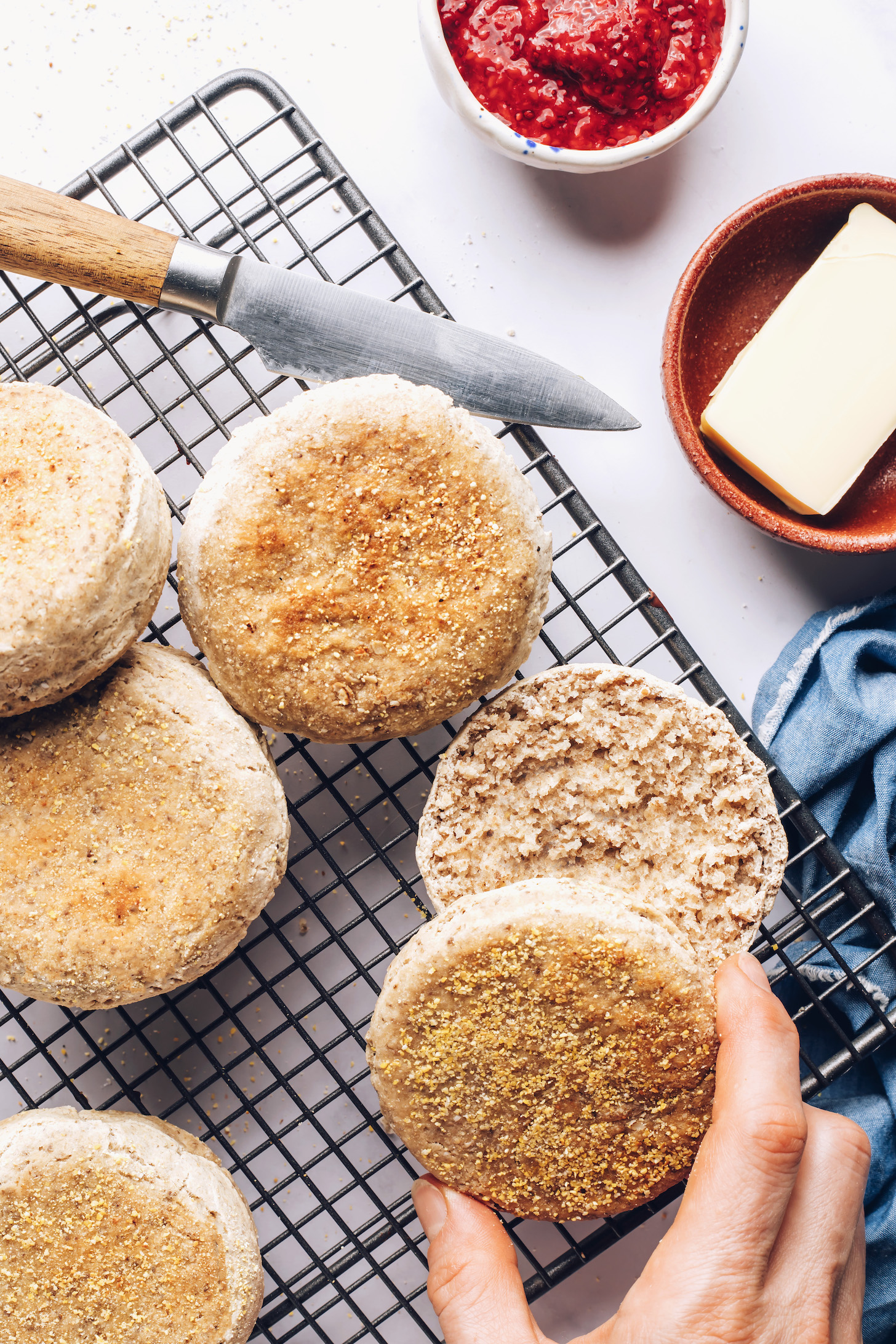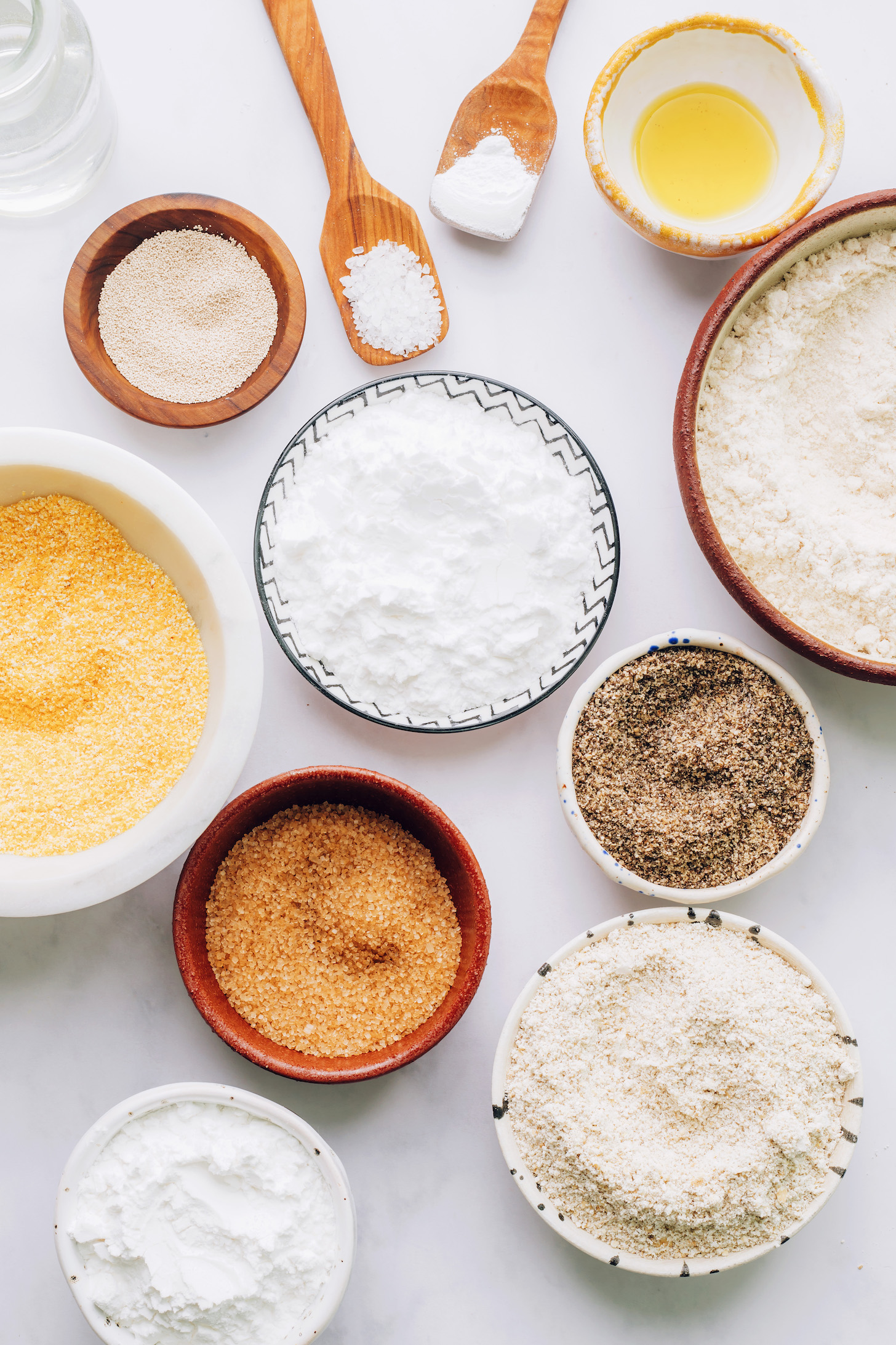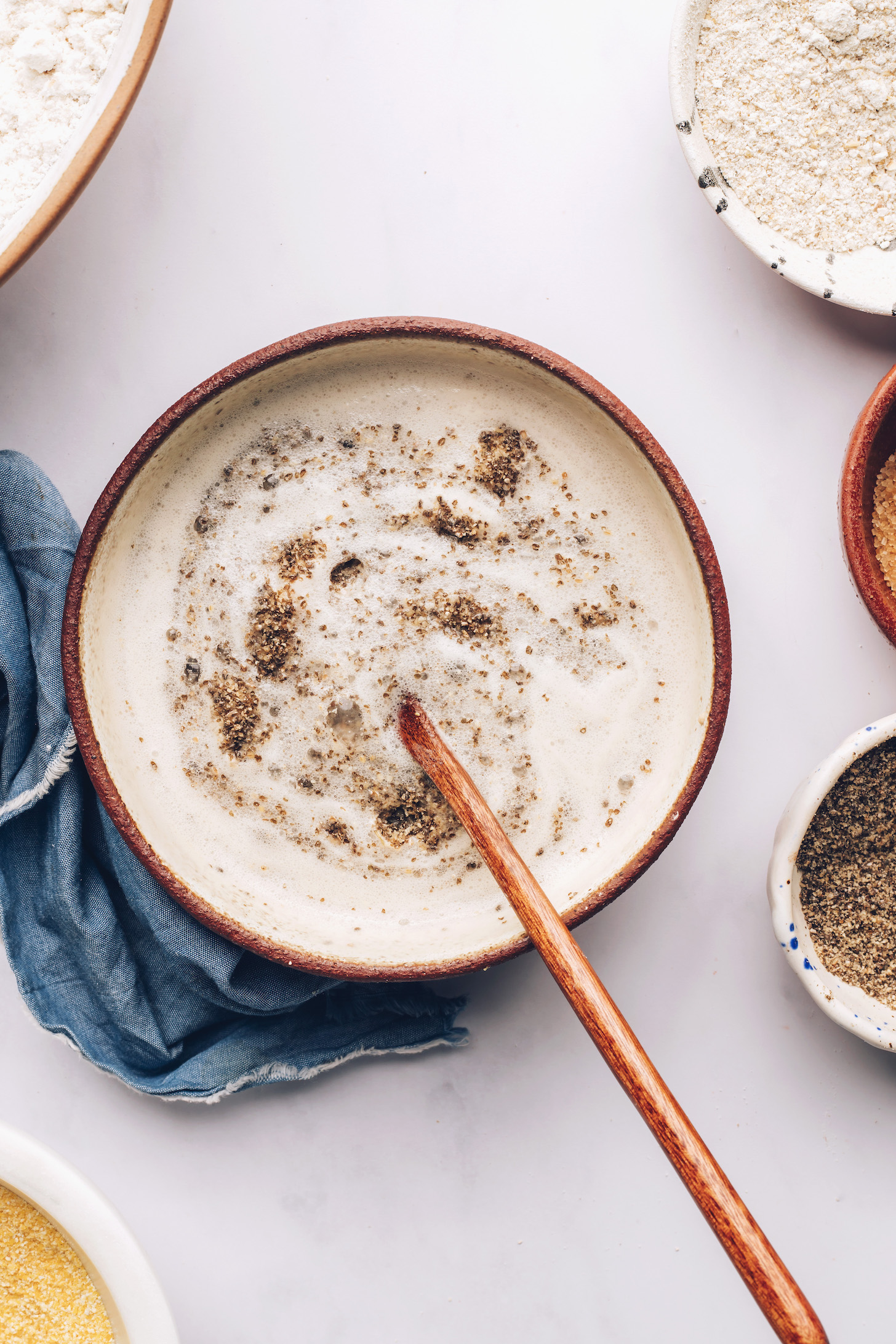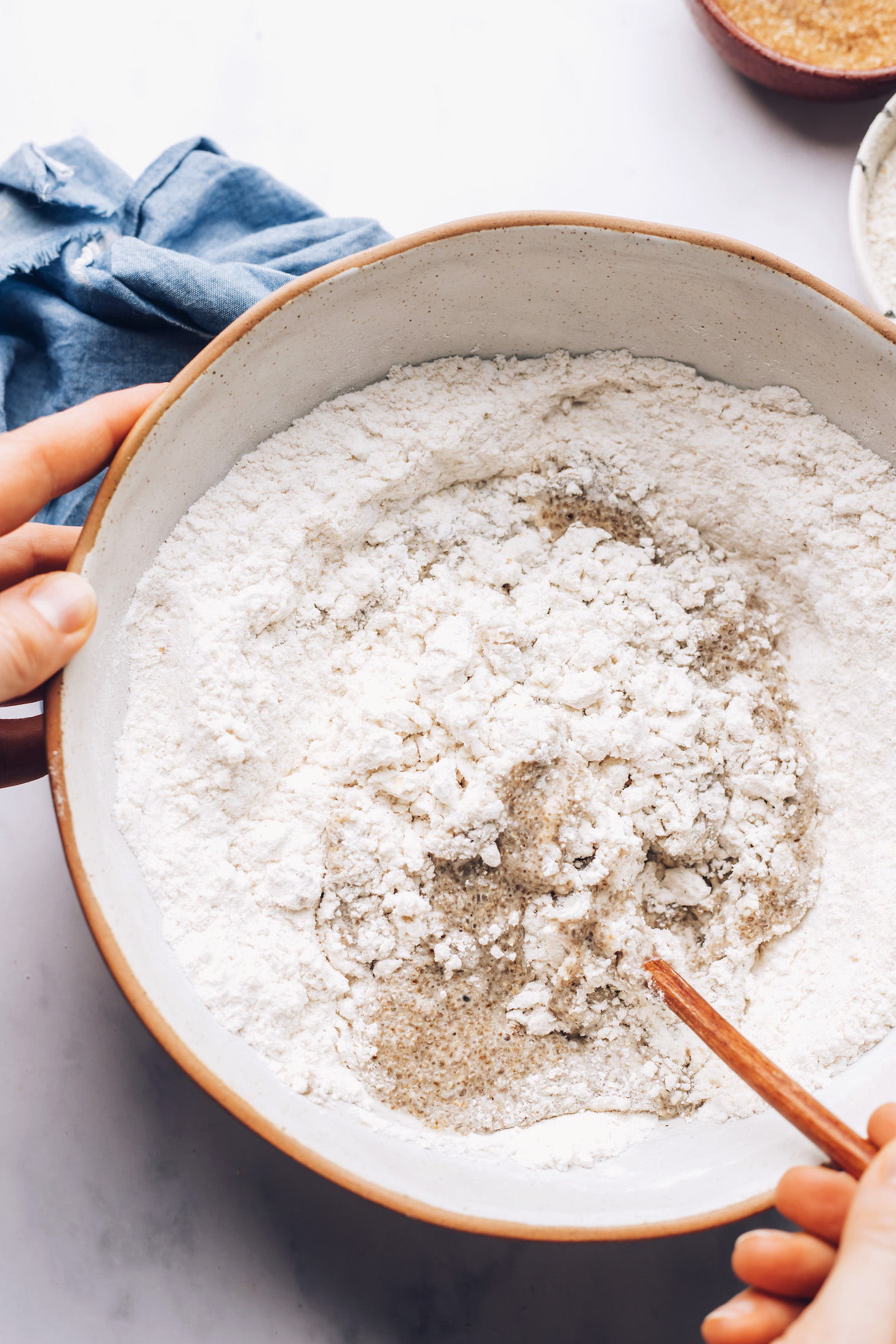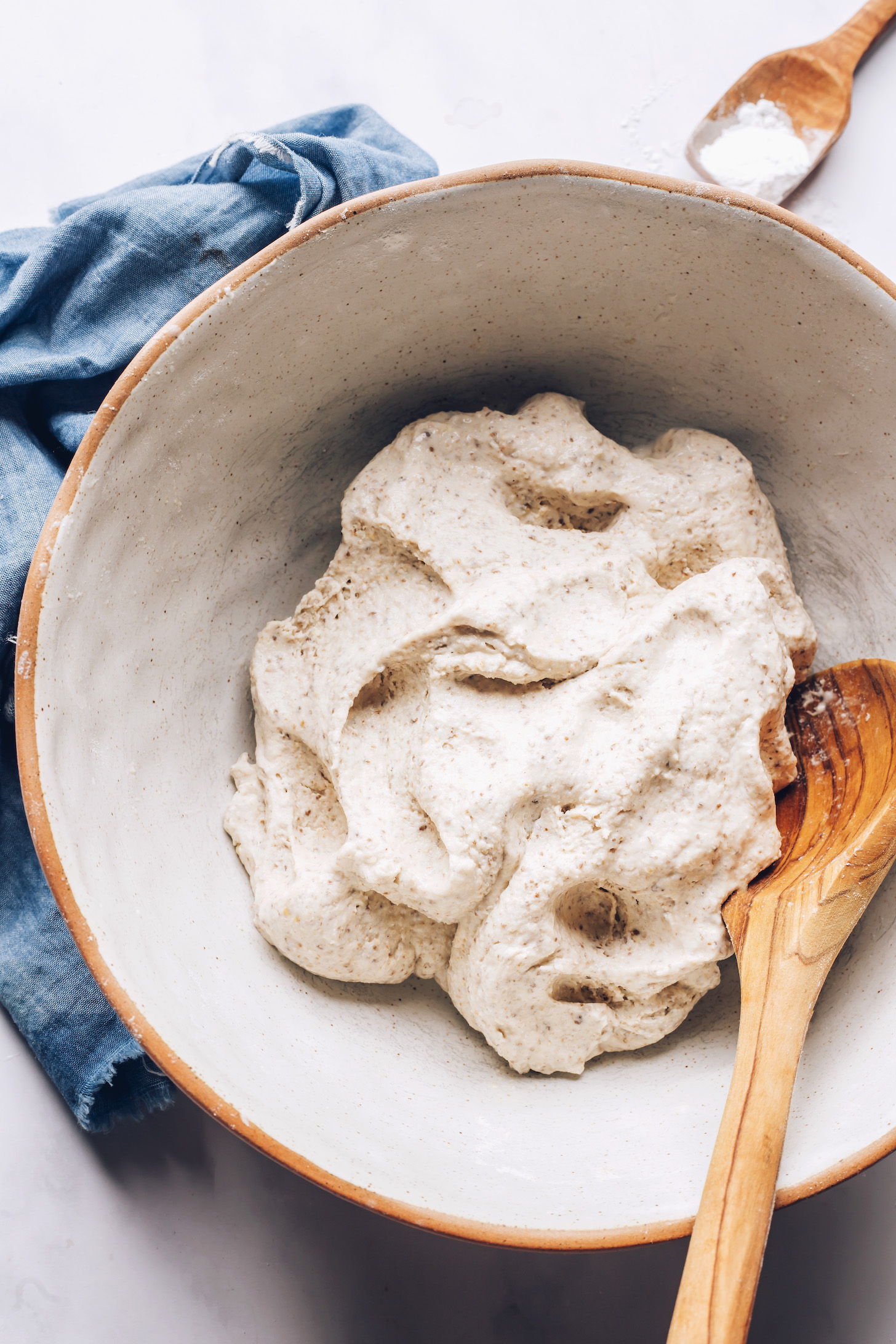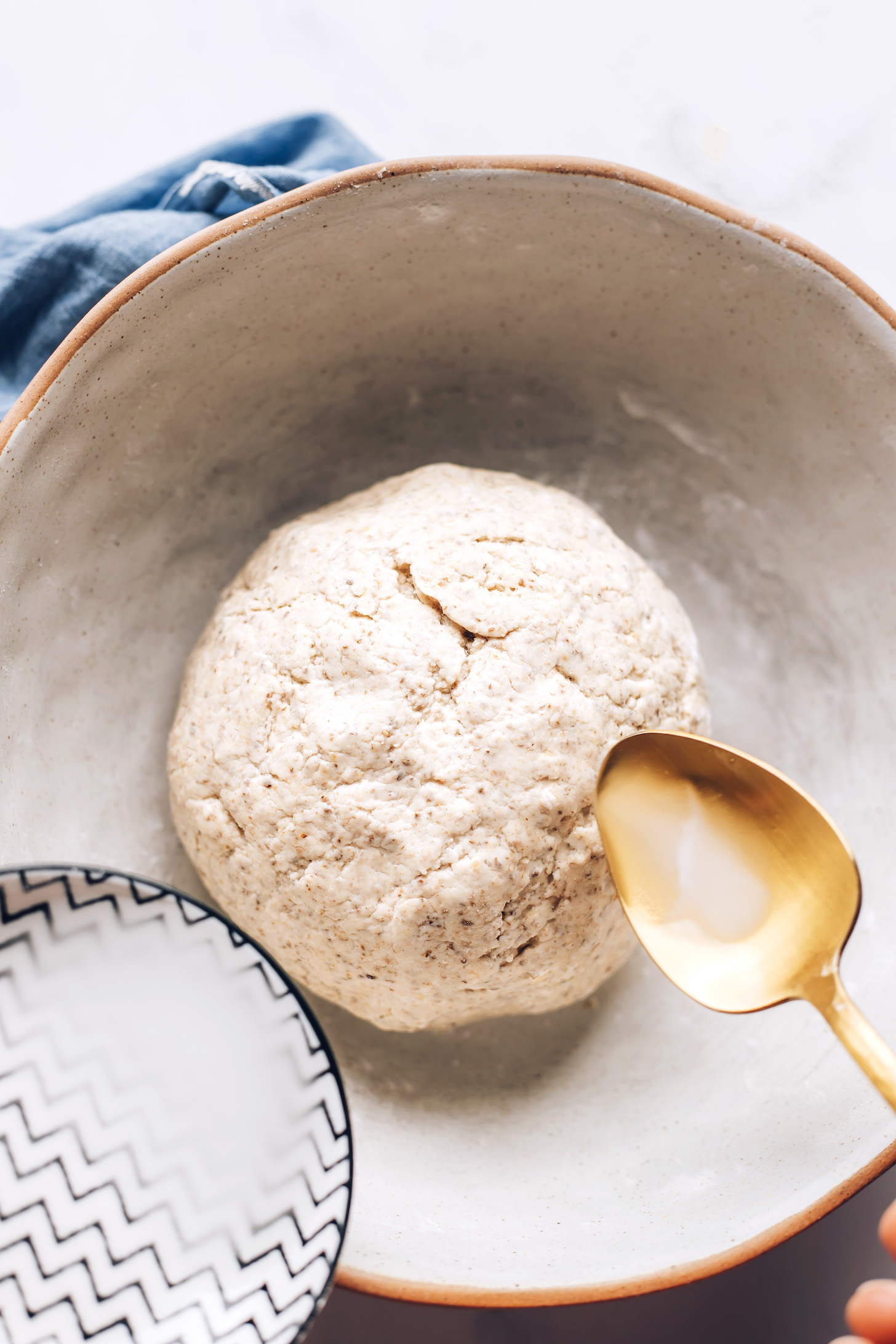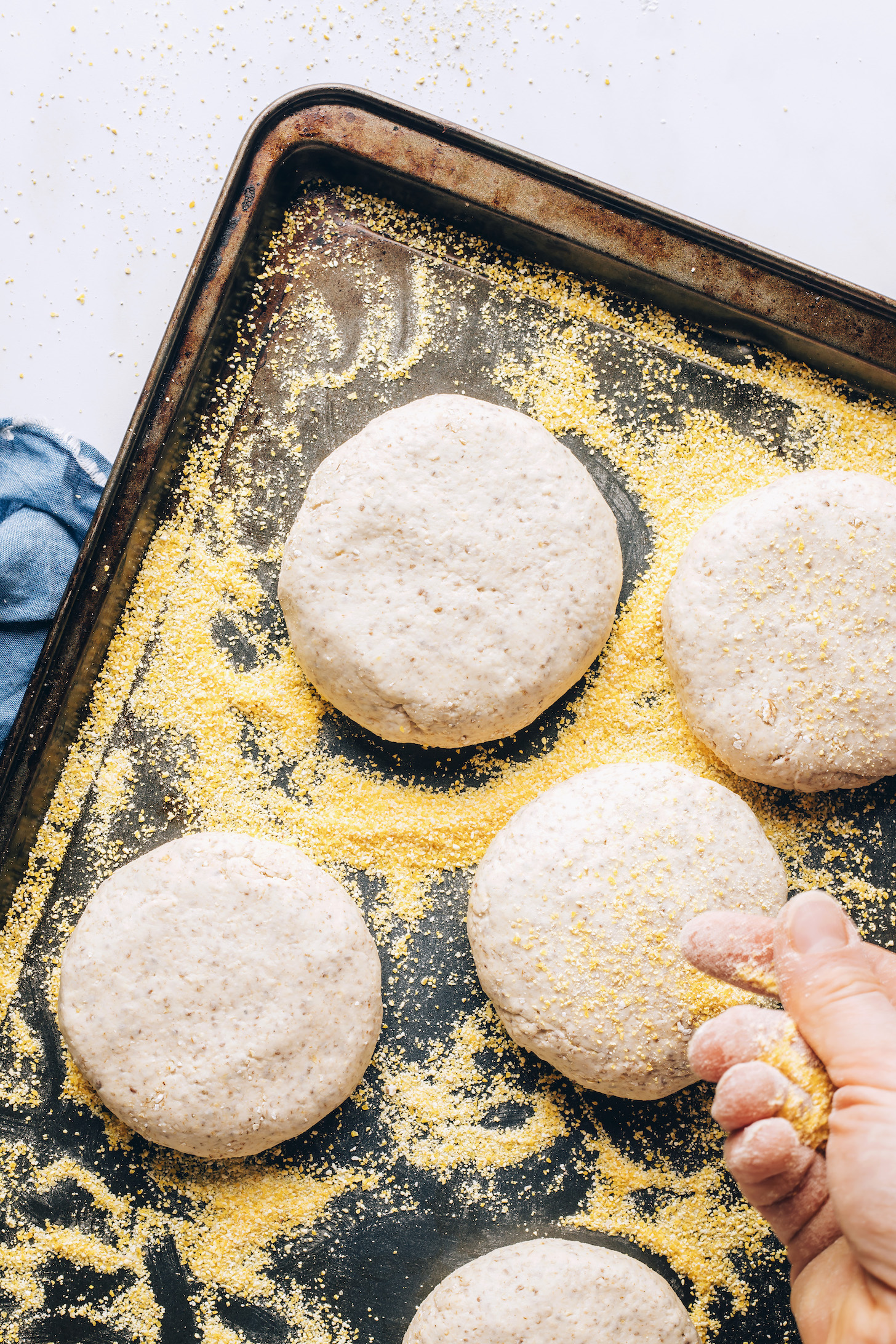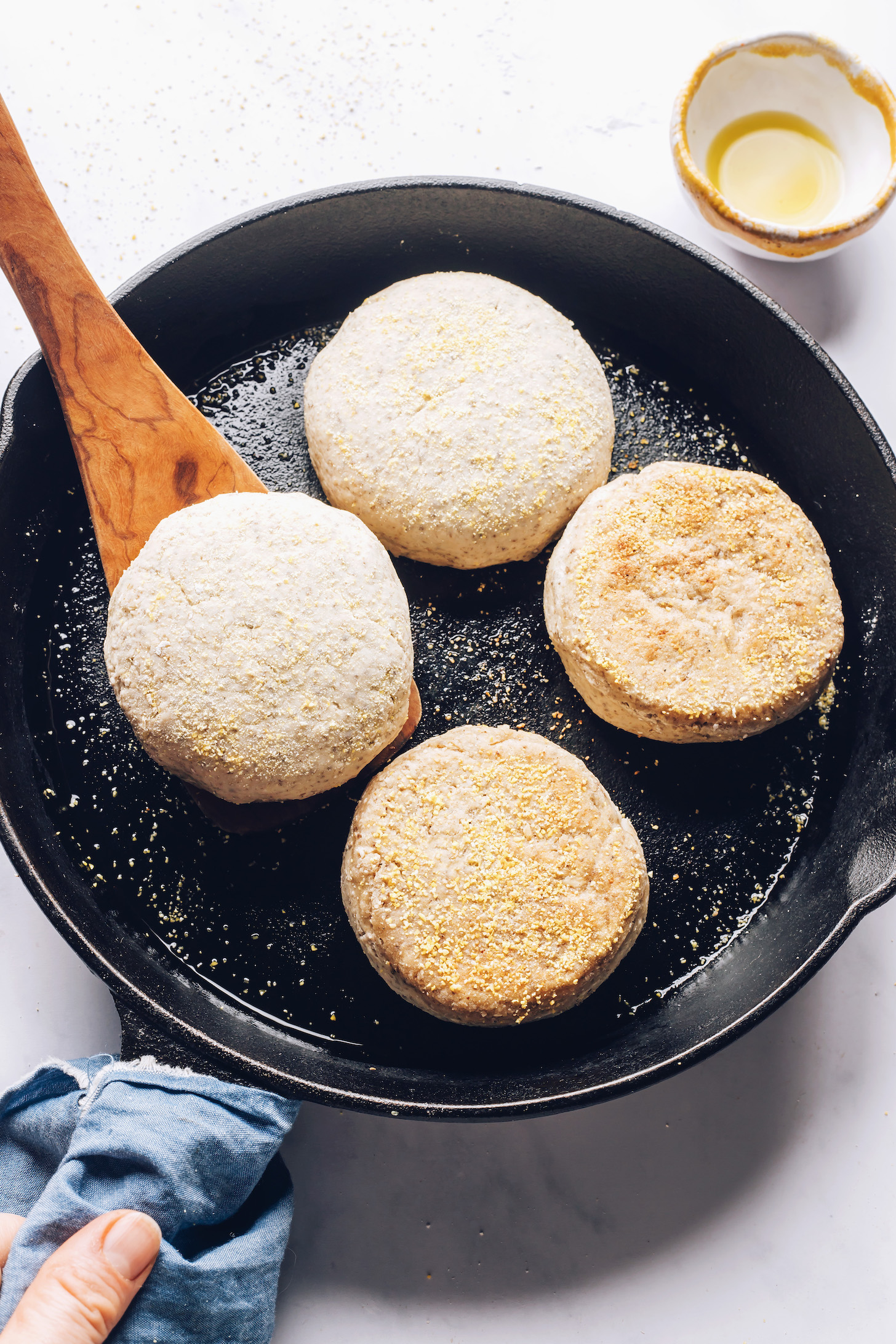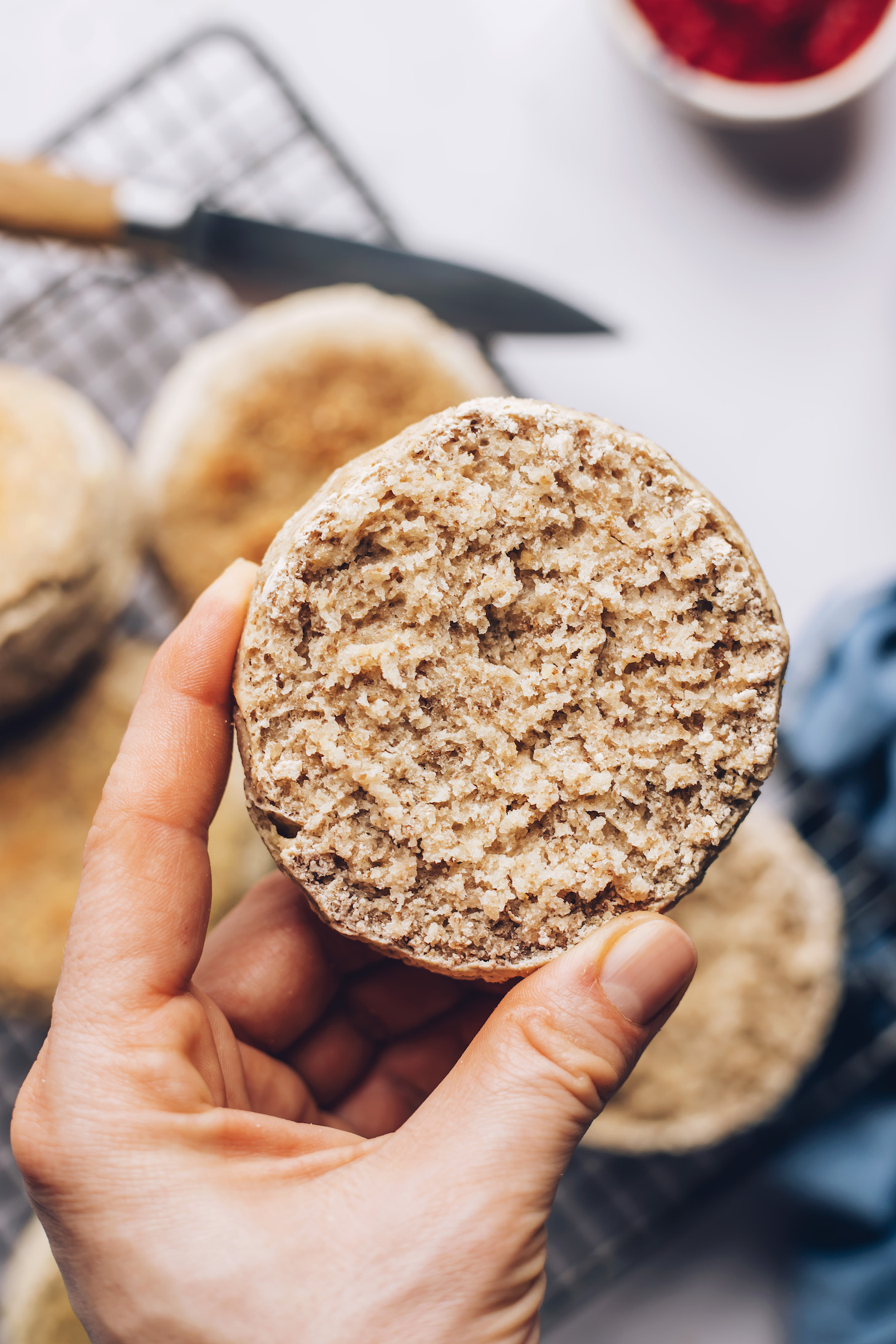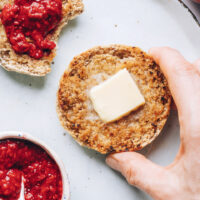They’re soft yet crusty and require just 10 ingredients! We love them with butter and jam, or to make Eggs Benedict (find our plant-based version here!) for a simple yet elegant brunch (Mother’s Day, anyone?). Let us show you how it’s done!
Origin of English Muffins
An English muffin is a small, round, yeasted bread that’s typically sliced in half horizontally and toasted. The earliest recipe resembling these toasty delights is believed to have been in a 1758 British cookbook. At the time, they were just called “muffins” and were sold door to door in England. Then when Samuel Bath Thomas moved from England to New York City, he opened a bakery and began making his mother’s muffin recipe. In 1894, he filed a trademark, claiming to be the first to use the term “English muffin.” English muffins are now a breakfast favorite in many places around the world including North America, Australia, and New Zealand. In Germany, they’re known as Toastbrötchen, and a similar dish called bolo de caco is served in Portugal. The following is our gluten-free and plant-based take on the delicious creation!
How to Make Gluten-Free Vegan English Muffins
For classic English muffin flavor (and texture), we start with the yeast, activating it by mixing dry active yeast with warm water and a little bit of sugar (because yeast loves sugar — and who can blame it?). Once the yeast has activated, we stir in ground chia seeds as the egg-free binder. Then we transition to the dry ingredients. A combination of gluten-free flours provides the perfect balance of structure (brown rice flour + oat flour), fluffiness (potato starch), and stretch (tapioca starch). The last dry ingredient is sea salt for flavor. After stirring the wet ingredients into the dry, we cover with a kitchen towel and let the dough rise. Then for extra lift, we stir in some baking powder dissolved in warm water and let the dough rise once more. We know, Sally, it’s a little extra effort, but you get amazing English muffins out of the deal! Plus, you can get some chores done in the meantime. We knew you were still in! Once the dough is done rising, you can either cook your English muffins right away or you can refrigerate the dough overnight if you want fresh-in-the-AM muffins! When ready to cook, divide and shape the dough, then place on a baking sheet lined with cornmeal (to prevent sticking). Then cook in an oiled skillet, flipping to get both sides of the English muffins nicely browned, repeating until you’ve cooked them all! The last step is to bake in the oven to ensure cooked centers. We hope you LOVE these English muffins! They’re:TenderToastyWholesomeComfortingVersatile& Just like the real deal! They’re delicious toasted with butter and jam or made into breakfast sandwiches or Eggs Benedict (find our plant-based version here!).
More Delicious Breakfast Recipes
Fluffy Millet Breakfast Cake with Stone FruitCarrot Cake Baked OatmealEasy Baked Beans on Toast (British-Inspired)Spring Frittata with Leeks, Asparagus, and Sweet Potato
If you try this recipe, let us know! Leave a comment, rate it, and don’t forget to tag a photo @minimalistbaker on Instagram. Cheers, friends!
